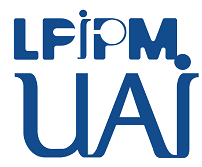Komunikasi Visual Mahasiswa Universitas Al Azhar Indonesia melalui Warna Fesyen
Abstract
Penelitian ini didasari oleh signifikansi warna sebagai alat komunikasi yang mampu melampaui batasan bahasa. Pemilihan warna dalam busana bukan sekadar soal estetika; warna juga digunakan untuk menyampaikan berbagai pesan, mulai dari emosi, karakter pribadi, hingga pandangan hidup seseorang, termasuk di kalangan mahasiswa. Penelitian ini berfokus pada eksplorasi komunikasi visual melalui warna fesyen yang dikenakan oleh mahasiswa Universitas Al Azhar Indonesia (UAI). Menggunakan pendekatan kualitatif dengan metode wawancara mendalam terhadap 13 informan, penelitian ini mengkaji bagaimana warna pakaian digunakan sebagai ekspresi diri, identitas, dan media komunikasi non-verbal. Informan dipilih secara purposif dari berbagai program studi dan kategori mode fesyen untuk memastikan keberagaman perspektif. Hasil penelitian menunjukkan bahwa warna memainkan peran penting dalam membentuk identitas pribadi dan mengekspresikan suasana hati. Pilihan warna tidak hanya merefleksikan kepribadian, tetapi juga memiliki dampak psikologis terhadap pemakainya, terutama untuk meningkatkan rasa percaya diri. Warna gelap, khususnya hitam, sering digunakan karena fleksibilitasnya, sementara warna cerah diasosiasikan dengan ekspresi keceriaan. Selain itu, temuan ini memberikan wawasan bagi produsen dan institusi pendidikan mengenai pentingnya warna dalam fesyen, baik untuk produk maupun lingkungan sosial. Penelitian ini menegaskan bahwa warna fesyen merupakan alat komunikasi visual yang kaya makna, yang melampaui fungsi estetika semata.
Kata Kunci: Ekspresi Diri, Komunikasi Visual, Mahasiswa UAI, Semiotika, Warna Fesyen.
Full Text:
PDFReferences
Jonauskaite, D., Althaus, B., Dael, N., Dan‐Glauser, E., & Mohr, C. What color do you feel? Color choices are driven by mood. Color Research & Application [Internet]. 2018 December; 44(2), 272-284. Tersedia di: https://onlinelibrary.wiley.com/doi/abs/10.1002/col.22327
Bleicher, S. Contemporary color: Theory and use. London: Routledge; 2023.
Twigg, J. Clothing, identity, embodiment and age. In Textile-led design for the active ageing population. Philadelphia: Woodhead Publishing. 2015.
Hillman, B. L. Dressing for the Culture Wars: Style and the Politics of Self- Presentation in the 1960s and 1970s. Nebraska: U of Nebraska Press. 2015.
Entwistle, J. The fashioned body: Fashion, dress and modern social theory. New Jersey: John Wiley & Sons; 2023.
Craik J. Fashion: the key concepts. Bloomsbury Publishing; 2024.
Bai Y, Xue Y. Study on multi-color emotion based on fashion color in 2019. Int J Cloth Sci Technol. 2021;33(3):388-401.
Jiang Q, Chen LC, Zhang J. Perception and preference analysis of fashion colors: Solid color shirts. Sustainability. 2019;11(8):2405.
Kodžoman D. The psychology of clothing: Meaning of colors, body image and gender expression in fashion. Text Leather Rev. 2019;2(2):90-103.
Reddy-Best KL, Choi E, Park H. Race, colorism, body size, body position, and sexiness: Critically analyzing women in fashion illustration textbooks. Cloth Text Res J. 2018;36(4):281-95.
Allan G. Qualitative research. In: Handbook for research students in the social sciences. London: Routledge; 2020.
Bryman, Alan. Quantitative and qualitative research: further reflections on their integration. In: Mixing methods: Qualitative and quantitative research. London; Routledge; 2017.
Rutledge PB, Hogg JLC. In‐depth interviews. Int Encycl Media Psychol. 2020;1-7.
Douglas H. Sampling techniques for qualitative research. In: Principles of social research methodology. Singapore: Springer Nature Singapore; 2022. p. 415-26.
Saeed B, Sheikh NM, Shahzadi N, Khan ZH. Shaping Self-Perception: The Intricate Relationship Between Self-Concept, Self-Image, and Body Dysmorphic Disorder. J Posit Sch Psychol. 2023;7(5):1043-59.
Drummond JJ. Self-identity and personal identity. Phenom Cogn Sci. 2021;20(2):235-47.
Zhang Y, Qin P. Comprehensive review: Understanding adolescent identity. Stud Psychol Sci. 2023;1(2):17-31.
Hadiyansyah D, Bawarti E, Ulfa M. Lipstick as female students visual communication strategy. RSF Conf Ser Bus Manag Soc Sci. 2023;3(2):1-8.
Demir Ü. Investigation of color‐emotion associations of the university students. Color Res Appl. 2020;45(5):871-84.
Massoudi AH. The vital role of pink marketing in the creation of women loyalty. Innov J Soc Sci Econ Rev. 2020;2(3):28-37.
Grisard D. Pink boys: colouring gender, gendering affect. Norma. 2018;13(3-4):227-49.
Kodžoman D. The psychology of clothing: Meaning of colors, body image and gender expression in fashion. Text Leather Rev. 2019;2(2):90-103.
Hirsch H. Clothing and colours in early Islam: Adornment (aesthetics), symbolism, and differentiation. Anthropol Middle East. 2020;15(1):99-114.
Pastoureau M. Blue: The history of a color. Princeton University Press; 2023.
Tilley RJ. Colour and the optical properties of materials. John Wiley & Sons; 2020.
Ramli S. Green spirituality; environmental savings based on spiritual ecology. Islam Q. 2021;65(2):145-78.
DOI: http://dx.doi.org/10.36722/psn.v4i1.3465
Refbacks
- There are currently no refbacks.
























